Nearly two centuries ago, a small hamlet lying between Liverpool and Manchester became host to one of the strangest competitions ever held. The Liverpool and Manchester Railway had just completed laying the rails but they were unsure whether to use a self-propelled steam locomotive or a static winding engine to pull passenger wagons by cables. In the end they decided to hold a competition to find out whether a boiler on wheels was better than a boiler bolted to the floor. The idea was that if a locomotive was found to be good enough, it would be used on the new railway.
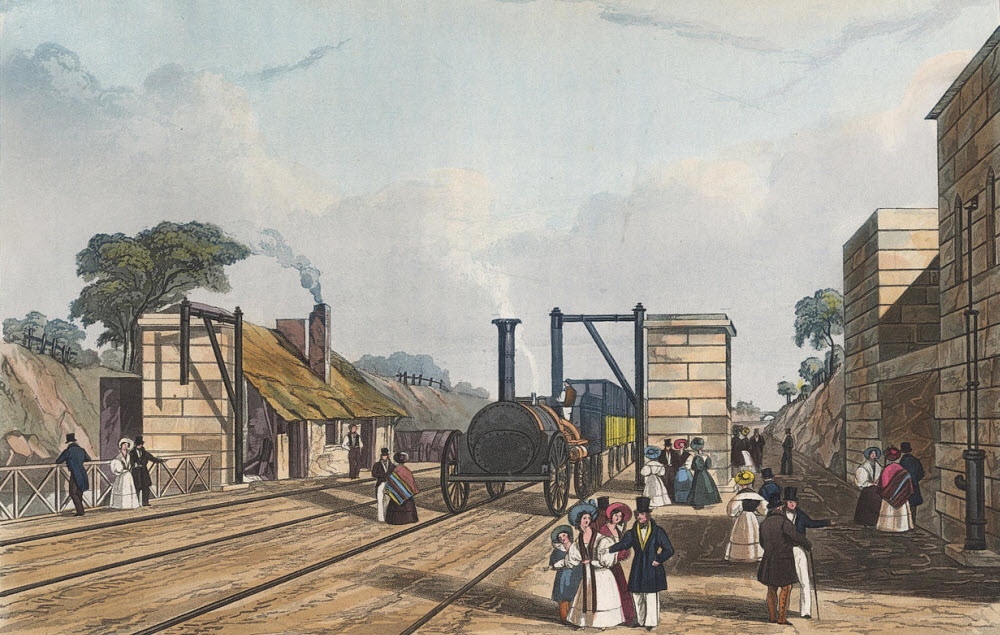
The Liverpool and Manchester Railway by J. Whatman, 1831.
When the Liverpool and Manchester Railway was originally projected, it was expected that locomotives were to be used on the line. But the idea of cable haulage was not altogether abandoned. Steam locomotives were still new technology, and the public had a fearful perception of the monstrous machines hissing and spluttering, breathing fire and belching smoke and steam. If they did not explode, the public thought, they would fill the countryside with noxious fumes.
George Stephenson, the engineer tasked to build the railway, strongly advocated using locomotives, but some of the directors of the railway preferred the old and tested method of cable haulage. To decide, the directors declared a competition for 'Engineers and Iron Founders' to present their best solution. A reward of £500 was announced for the best design, and although not explicitly stated, it was understood that the winning design would eventually get the contract for building locomotives for the Liverpool and Manchester Railway.
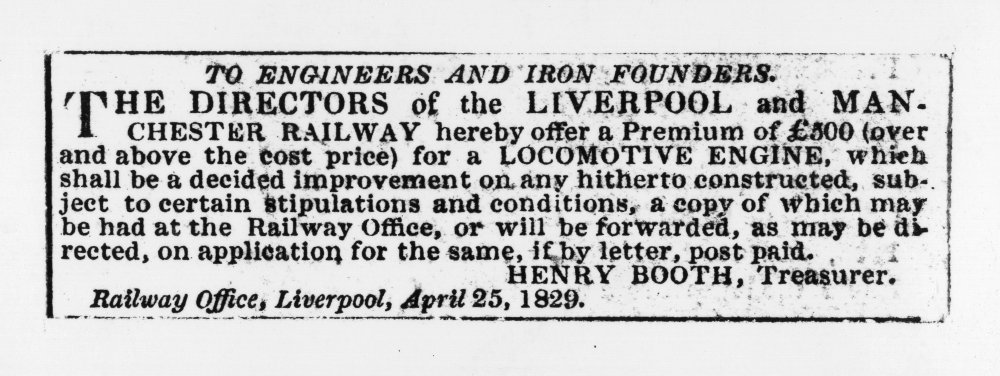
Advertisement for the competition.
Each locomotive was to make ten round trips along one mile and three quarters of track, simulating the 35-mile run between Liverpool and Manchester. This was to be repeated for ten more trips, after refueling, to simulate the journey from Manchester back again to Liverpool. The locomotives were to haul three times their own weight, and the amount of water and fuel it consumed was to be carefully recorded. The locomotive that performed the best in terms of strength, power, reliability, as well as speed, was to be selected the winner.
The site chosen for the trials was the village of Rainhill, situated about 14 km east of Liverpool.
Ten locomotives put forward their names but only five actually arrived for the competition which began on 6 October 1829. Out of these only three were in serious competition. These were the Rocket, designed by George Stephenson; Novelty built by John Ericsson and John Braithwaite; and Sans Pareil, built by Timothy Hackworth. One entrant called Cycloped was an absurd contraption with a horse walking endlessly over a treadmill to generate power. Before exhaustion had killed the horse, it fell through the wooden platform and was disqualified. Timothy Burstall’s Perseverance was damaged en route to the competition, and spent the first five days of the competition in repairs. When it finally joined the race, the locomotive managed only 6 mph, lower than the minimum required speed of 10 mph.

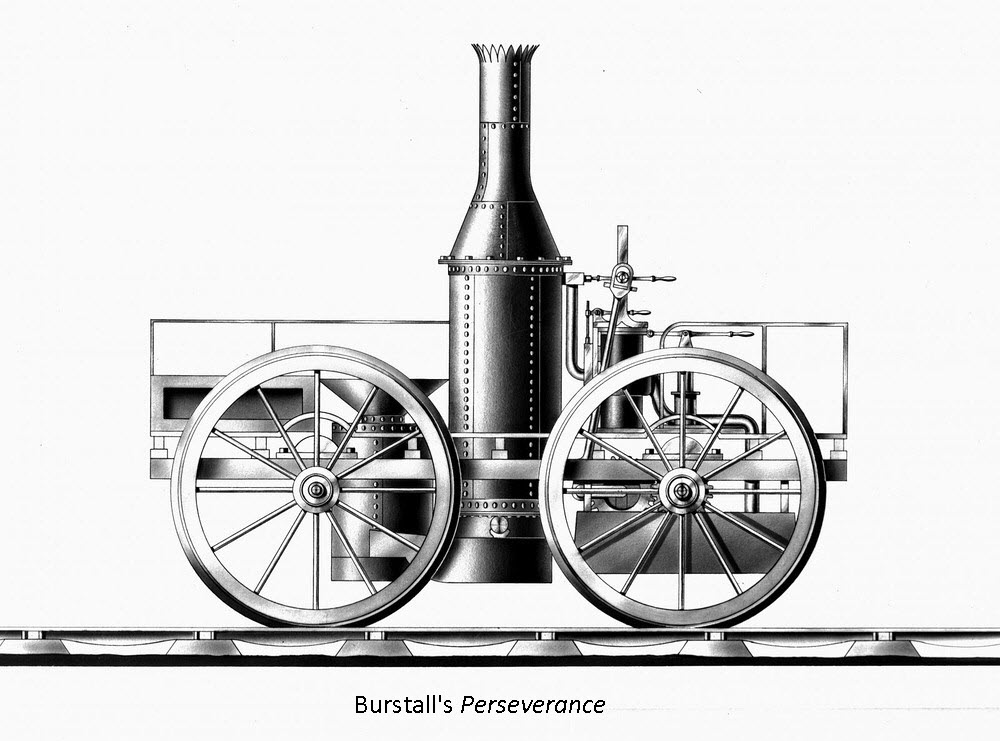
Sans Pareil was nearly excluded from the trial because it was 140 kg overweight, but the directors of the railway allowed Timothy Hackworth to demonstrate the locomotive’s capabilities. Sans Pareil eventually completed eight trips before cracking a cylinder. But it performed well—well enough for Timothy Hackworth to land a contract with the Liverpool and Manchester Railway, who ran it for two years, before selling it to the Bolton and Leigh Railway.
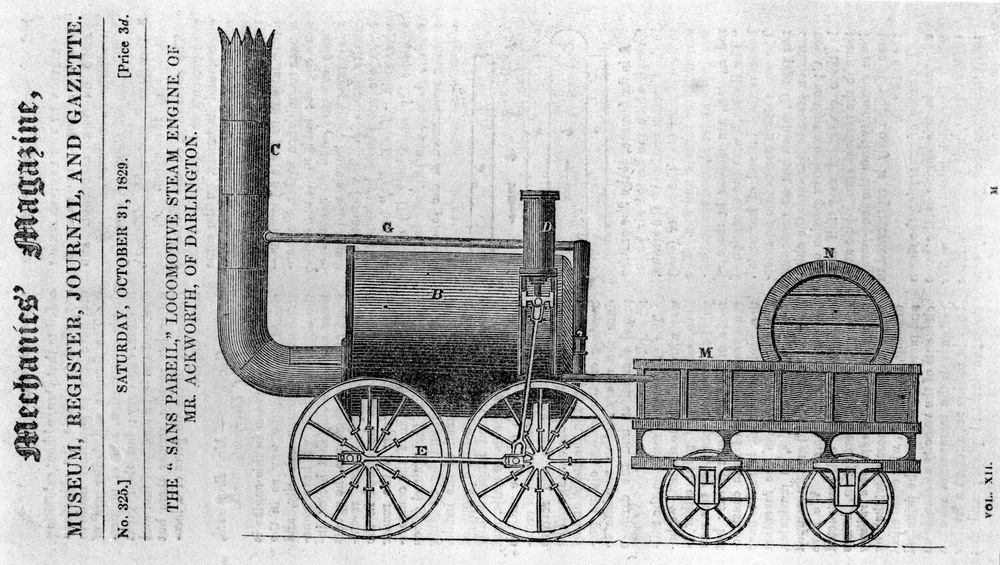
Novelty was the crowd favorite because of the astonishing speeds it reached—28 miles per hour (or 45 kmph), but was plagued with many design weaknesses. After suffering multiple failures, Novelty was withdrawn from the trial.
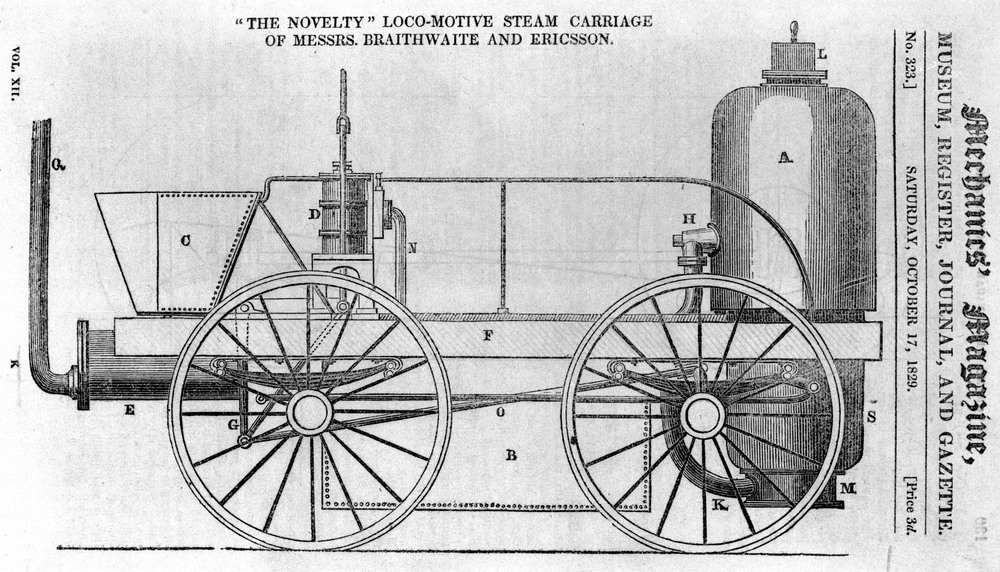
That left Stephenson's Rocket. The Rocket was the only locomotive that completed the trials, averaging 12 miles per hour (19 kmph) with a top speed of 30 miles per hour (48 km/h). It won the competition, and Stephenson was given the contract to produce locomotives for the Liverpool and Manchester Railway. The Rocket was the clear winner not only because it was the only one left in the competition, but because of its many innovative design concepts that became the standard for most steam engines for the next 150 years.
The Rainhill trial ran for six days, and had a huge impact on the public. Between ten to fifteen thousand spectators came to watch the competition. Newspapers followed progress at the trials, describing in detail the astonishing achievements of the engines.
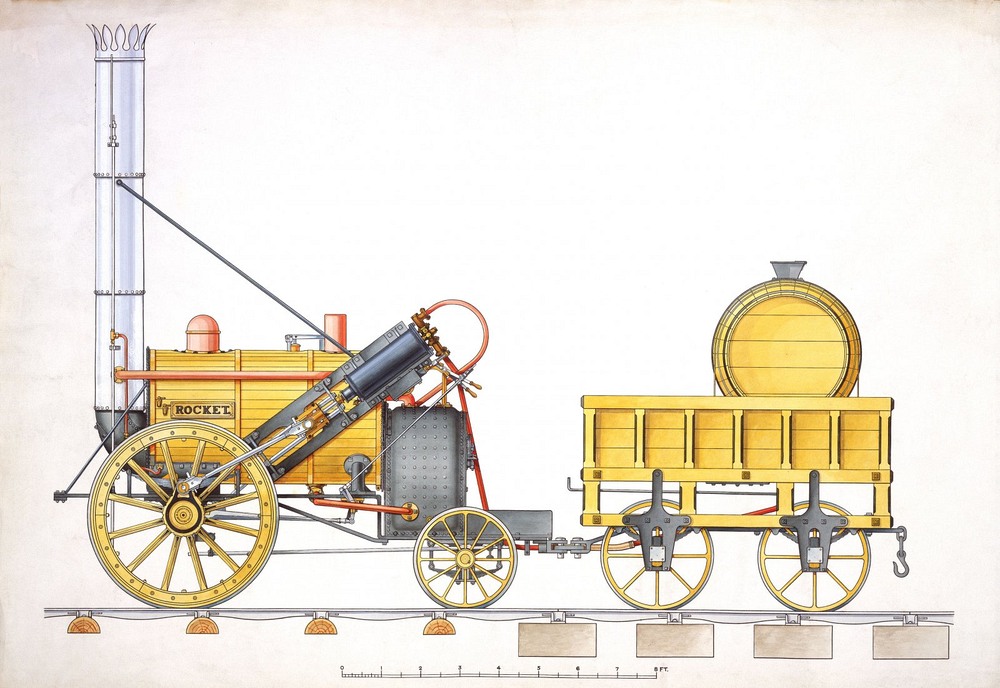
Dendy Marshall wrote in the Transactions of the Newcomen Society in 1929:
It is difficult to over-estimate the importance of the Rainhill Competition. The fate of the locomotive was hanging by a thread. If the 'Rocket' had broken down, as her rivals did - or, much less than that, if there had been a serious accident: if Huskisson had been killed then, instead of a year later: the locomotive would have been condemned, the stationary engine would have been adopted as a means of propulsion on railways, and the development of the latter would have been smothered, at all events for a considerable time.
The success of the 'Rocket' started the triumphant progress of railways and the steam locomotive, which did more than anything else to establish the prestige of Great Britain in the field of engineering.

Stephenson's Rocket at the Science Museum, London. Image credit: Alex Segre / Shutterstock.com



Comments
Post a Comment